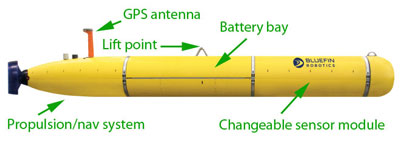75 years ago (1937) was a sad day in history - Amelia Earhart disappeared on her second attempt to fly around the world. A recent press release from The International Group for Historic Aircraft Recovery (TIGHAR) reveals that new technology will finally attempt to gather evidence on what happened with Earhart after that fateful flight. A specialized FedEx process to deliver the parts to ensure everything goes smoothly. All of the details on the expedition can be found on TIGHAR's project page.
The technology is out of a video game. An Autonomous Underwater Vehicle (AUV) will be sent to map the underwater area and highlight any areas of interest that may be wreckage. A Remote Operated Vehicle (ROV) will then take scans, measurements, and other operations of the target areas. The plan is imagery only - no recovery will be attempted.


Images appear courtesy of TIGHAR.org
Hopefully technology can help us solve what happened to one of our nation's heroes. Let's go!




